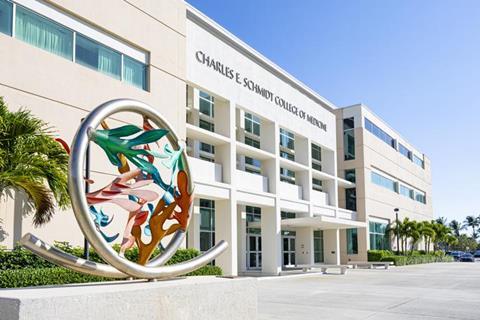Vaccines to prevent common and serious infectious diseases have had a greater impact on improving human health than any other medical advance of the 20th century, surpassing even sanitation and potable water. From the global eradication of smallpox in 1980 to the unprecedented development of effective and safe mRNA vaccines for COVID-19, vaccinations have played crucial roles in preventing millions of premature deaths and hospitalizations in adults and children.

These monumental efforts have involved coordinated local, regional, national and international organizations and dedicated clinical and public health professionals. Unfortunately, over the past decade, decreasing vaccination rates now threaten the huge beneficial impacts of vaccinations in the United States and globally.
READ MORE: Comprehensive meta-analysis pinpoints what vaccination strategies different countries should adopt
READ MORE: Knowledge is a factor in closing black-white COVID-19 vaccination gap
The barriers are multifactorial and include increasing vaccine hesitancy in the U.S. In a review published online ahead of print in The American Journal of Medicine, researchers from Florida Atlantic University’s Schmidt College of Medicine and colleagues discuss new clinical and public health challenges in vaccinations of U.S. adults.
Promise for the future
“In the U.S., the continuing dedicated efforts of all clinical and public health professionals combined with advancements in vaccine technology and the resilience of public health systems all offer promise for the future,” said senior author Charles H. Hennekens, M.D., first Sir Richard Doll Professor of Medicine and Preventive Medicine and senior academic advisor, in the departments of medicine, and population health and social medicine.
“Health care providers and public health officials should remain cognizant that increasing vaccination rates are essential but not sufficient. Surveillance-containment entails rapid detection and reporting of cases with prompt immunization of household members and close contacts of confirmed cases, combined with judicious use of isolation, prompt antiviral or antibiotic medications, social distancing, respiratory etiquette; home or large-scale quarantines; and masking. The continuing and expanded efforts of U.S. health care providers are vital to these successes.”
Emerging strain
The authors note that health care providers in the U.S. also face major challenges in achieving high vaccination rates against COVID-19, respiratory syncytial virus (RSV) and influenza, which confers particularly high risks among the elderly and immunocompromised patients. They caution about potential concerns relating to the recent emergence of a highly virulent strain of influenza (H5N1) in China.
“The pneumococcal vaccine has also been shown to be safe and effective in randomized trials for patients aged 18 to 79, including those over 80, making it particularly beneficial for the elderly, immunocompromised individuals, and those at high risk for pneumonia,” said Hennekens. “Furthermore, Herpes zoster, or shingles, affects 1 in 3 people over 65 and is caused by the reactivation of the varicella zoster virus from past chickenpox infections. It can lead to debilitating complications and is especially concerning for immunocompromised patients. The shingles vaccine is safe, effective and FDA-approved for individuals aged 50 and older.”
Measles outbreaks
Although it was eliminated in 2000, the authors also discuss the clinical and public health challenges of measles in the U.S. and worldwide. Recent outbreaks in areas with low vaccination rates, exacerbated by more recent vaccine hesitancy, have led to a loss of herd immunity. By July 2023, 116 out of 195 countries reported lower measles vaccination rates. The World Health Organization (WHO) estimates that vaccinations since 1974 have prevented about 154 million premature deaths, with 101 million of those being infants.
“Vaccines for 14 diseases have contributed to a 40% reduction in global infant deaths. In the U.S., from 1994 to 2024, measles vaccination is estimated to have prevented 508 million cases, 32 million hospitalizations, and more than 1 million deaths.” said Hennekens. “Maintaining herd immunity is crucial to prevent future measles outbreaks and related deaths.”
Global emergency
Lastly, in August, the WHO declared mpox a global public health emergency. Mpox, a variant of smallpox, was largely controlled by smallpox vaccinations, which have declined since its eradication in 1980.
“The emergence of new variants, particularly clade Ib, poses increased mortality risks,” said Hennekens. “A recently developed vaccine has been effective in limiting spread, particularly in high-risk areas like sub-Saharan Africa. However, global vaccination efforts face special challenges, including limited supplies and inadequate delivery to vulnerable populations.”
The authors conclude that in the U.S., ongoing efforts by health care and public health professionals, along with advances in vaccine technology, hold promise for eliminating or even eradicating many infectious diseases. Achieving these goals requires sustained collaboration and a focus on increasing vaccination rates.
Study co-authors are John Dunn, a second-year FAU medical student, Schmidt College of Medicine; Barry R. Davis, M.D., Ph.D., professor emeritus of biostatistics and data science, School of Public Health, University of Texas – Houston; Alexandra Matarazzo, a second-year FAU medical student, Schmidt College of Medicine; Yanna Willet, a pre-medical student, Virigina Tech; Sadine Al-Farauki, a first-year medical student, Ross School of Medicine, and FAU graduate; and Dennis G. Maki, M.D., the first Ovid O. Meyer Professor of Medicine, chief of infectious diseases, emeritus, University of Wisconsin School of Medicine and Public Health.
Hennekens and Maki served for two years as lieutenant commanders in the U.S. Public Health Service as epidemic intelligence service (EIS) officers with the U.S. Centers for Disease Control and Prevention (CDC). They served under Alexander D. Langmuir, M.D., who created the EIS and directed the epidemiology program at the CDC, as well as Donald A. Henderson, M.D., chief of the Virus Disease Surveillance Program at the CDC. Langmuir and Henderson made significant contributions to the eradication of polio and smallpox using widespread vaccinations and public health strategies of proven benefit and had extraordinary collaborations with local, state, federal and international health authorities.







No comments yet